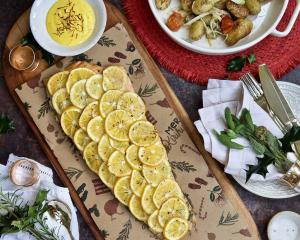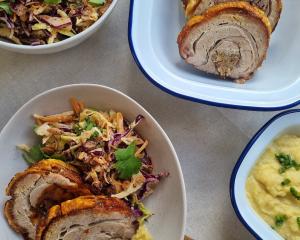
What if we told you that you could cut your grocery bill and help the planet - all in the time it takes to boil the jug? That’s the magic of Beat the Bin, a new Love Food Hate Waste three-week email challenge designed to help Kiwis waste less food and save more money. And there’s no better time to give it a go.
The average household in Aotearoa throws away about $1200 worth of edible food every year. That’s 16 bags of groceries in the bin, not your belly. The culprit? Often, it’s not what we think. A few limp vegetables, a forgotten container of leftovers, or some "best intentions" produce that never made it to the plate.
But the good news? Love Food Hate Waste’s Beat the Bin challenge offers simple, five-minute food fixes anyone can try, no meal prep marathons or complicated routines, and definitely no zero-waste perfectionism required.
One of the easiest ways to cut waste and save money is by getting into the habit of checking what’s in your fridge, freezer, and pantry before you shop. That way, you avoid double-ups, rescue foods nearing their use-by dates, and start making meals around what you’ve already got. A quick peek can save you both time and cash and reduce waste while you’re at it.
Another smart move is to leave the peels on your veges. Skins are packed with fibre and nutrients, and skipping the peeler saves precious prep time. Whether it’s kumara, carrots, or even spuds for a roast, many vegetables are just as tasty (and more nutritious) with their jackets on.
Looking for inspiration? Try making carrot and onion bhajis - crispy, flavourful, and quick to whip up. And don’t toss those carrot tops! They make a zesty chutney that’s the perfect dipping companion.
It’s little shifts like these that add up. In fact, 57% of food wasted in New Zealand is vegetables and much of that is perfectly edible parts like stems, skins, and leaves. The more of the food we buy that actually gets eaten, the less waste we produce, and the more value we get from every grocery shop.
You don’t need to overhaul your life or have a zero-waste fridge to make a difference. It’s about realistic, achievable actions that fit into busy lives, things that feel less like a chore and more like a win.
Because when thousands of households across the motu make small shifts together, the ripple effects are huge. Less waste. More savings. And a lighter impact on the planet.
The Beat the Bin challenge is free, it’s practical, and it’s packed with small food wins that actually work. Plus, there are awesome prizes up for grabs including three $500 grocery vouchers.
Carrot and onion bhajis with carrot top chutney
150g chickpea flour
50g plain flour (to make gluten-free, use cornmeal)
½ tsp baking powder
1 tsp ground cumin
1 tsp cumin seeds
1 tsp garlic, crushed or powder
1 green chilli, chopped (optional)
1 Tbsp coriander stalks (see tips for substitutions)
2 medium carrots, washed and grated
2 onions, finely sliced
1 tsp salt
¾ cup warm vege stock
Oil for frying
Carrot top chutney
¼ cup oil
½ tsp red chilli, finely chopped
½ tsp sugar or honey
1 garlic clove, crushed
½ tsp cumin seeds
¼ cup carrot tops, finely chopped
1 Tbsp coriander leaves and stalks, chopped (see tips for substitutions)
Juice half a lemon
Salt and pepper to taste
Method
1. Place all of the bhaji ingredients, other than the stock and the oil, into a large bowl. Mix well from the bottom of the bowl. Gradually add the stock until your mixture forms a paste consistency. Not too runny.
2. Pour enough oil into a large nonstick frying pan for a shallow fry. When hot, add spoonfuls of your mixture. Don’t crowd the pan. Pat down gently so they’re semi-flat. Fry on both sides until golden.
3. When cooked, place on a lined baking tray, and place in a warm oven to keep hot until you’ve finished the batch.
4. To make the chutney: whisk all the ingredients together until the sugar or honey has dissolved, taste and season.












